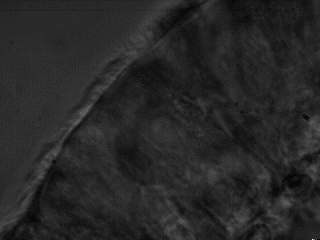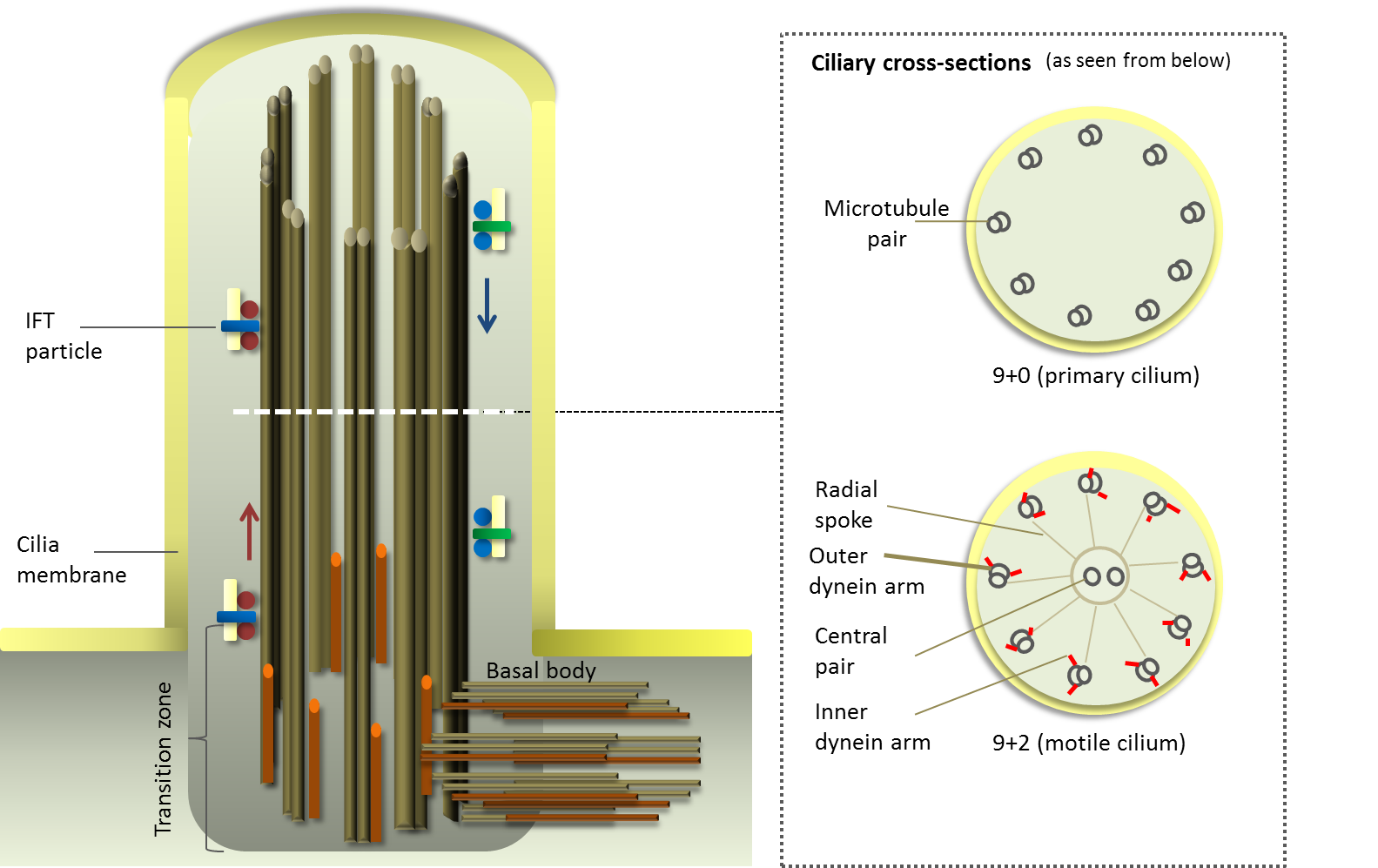Where Is The Cilia Located In An Animal Cell
Cilia
The ciliary apparatus is continued to cell cycle progression and proliferation, and cilia play a vital office in human and beast evolution and in everyday life.
The length of a unmarried cilium is ane-10 micrometres and width is less than 1 micrometre.
Cilia are broadly divided into ii types. They function separately and sometimes together:

'Motile' (or moving) cilia are found in the lungs, respiratory tract and middle ear. These cilia have a rhythmic waving or beating motion. They piece of work, for case, to go on the airways clear of fungus and clay, allowing us to breathe easily and without irritation. They also help propel sperm.

Primary cilia announced typically equally single appendages microtubules on the apical surface of cells and lack the key pair of microtubules (e.g. in kidney tubules).
In the kidney, for instance, cilia bend with urine flow and ship a signal to alert the cells that there is a flow of urine.
In the center, non-motile cilia are found inside the low-cal-sensitive cells (photoreceptors) of the retina. These cilia act similar microscopic train-tracks, and let the transport of vital molecules from one end of the photoreceptor to the other.
Structure and Function of Cilia

Structurally, each cilium comprises a microtubular backbone - the ciliary axoneme - surrounded by plasma membrane (come across effigy below).
Motile cilia are characterized by a typical '9+2' architecture with nine outer microtubule doublets and a central pair of microtubules (e.one thousand bronchi).
Primary cilia appear typically every bit unmarried appendages microtubules on the apical surface of cells and lack the cardinal pair of microtubules (e.g. in kidney tubules).
Ciliary proteins are synthesized in the cell body and must be transported to the tip of the axoneme. This is achieved by Intraflagellar Transport (IFT), an ordered and highly regulated anterograde and retrograde translocation of polypeptide complexes (IFT particles) forth the length of the ciliary axoneme.
Dysfunction or defects in motile and primary cilia are now understood to underlie a number of devastating genetic weather - termed ciliopathies - which carry a heavy economic and health burden on individuals, families and society.
Much is still unknown about the structure and role of motile and master cilia, but we believe that more inquiry into these critically of import cellular organelles will eventually bring about improve ways to treat and aid people whose lives are impacted by lacking cilia.
Touch of Lacking Cilia
Lacking and dysfunctional functioning in motile and non-motile cilia result in a large number of symptoms and disorders which have significant impact on those affected.
Defective and dysfunctional functioning in motile and non-motile cilia affects multiple systems, causing blindness, deafness, chronic respiratory infections, kidney disease, heart disease, infertility, obesity and diabetes. These symptoms have significant impact on those affected; some are devastating, well-nigh are life-threatening.
The diagram indicates the effects and a non-exhaustive summary of some of these symptoms is provided below. For data on known and identified ciliopathy syndromes and diseases, see the Ciliopathies section of this site.
Source: https://ciliopathyalliance.org/cilia
Posted by: schmidttheran.blogspot.com

0 Response to "Where Is The Cilia Located In An Animal Cell"
Post a Comment